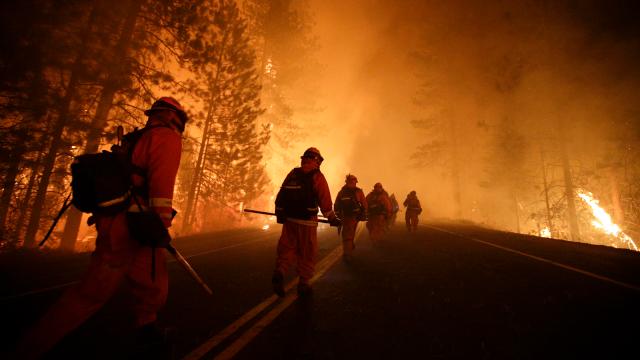As of this morning, the Rim Fire burning through Yosemite National Park has scorched 237,341 acres since it caught on August 17, presumably from an illegal marijuana grow operation. Firefighters have been battling the blaze nonstop and currently have the fire 75 per cent contained. Crews credit better, wetter conditions for making the containment gains easier. But it’s their equipment that makes it even possible in the first place.
To date, no fewer than 16 helicopters, 49 bulldozers, 454 fire engines and 39 water tenders, and a small fleet of tanker planes have been pressed into service against the wildfire. Here are a few of the tools firefighters are using to extinguish the fifth-largest fire in California history.
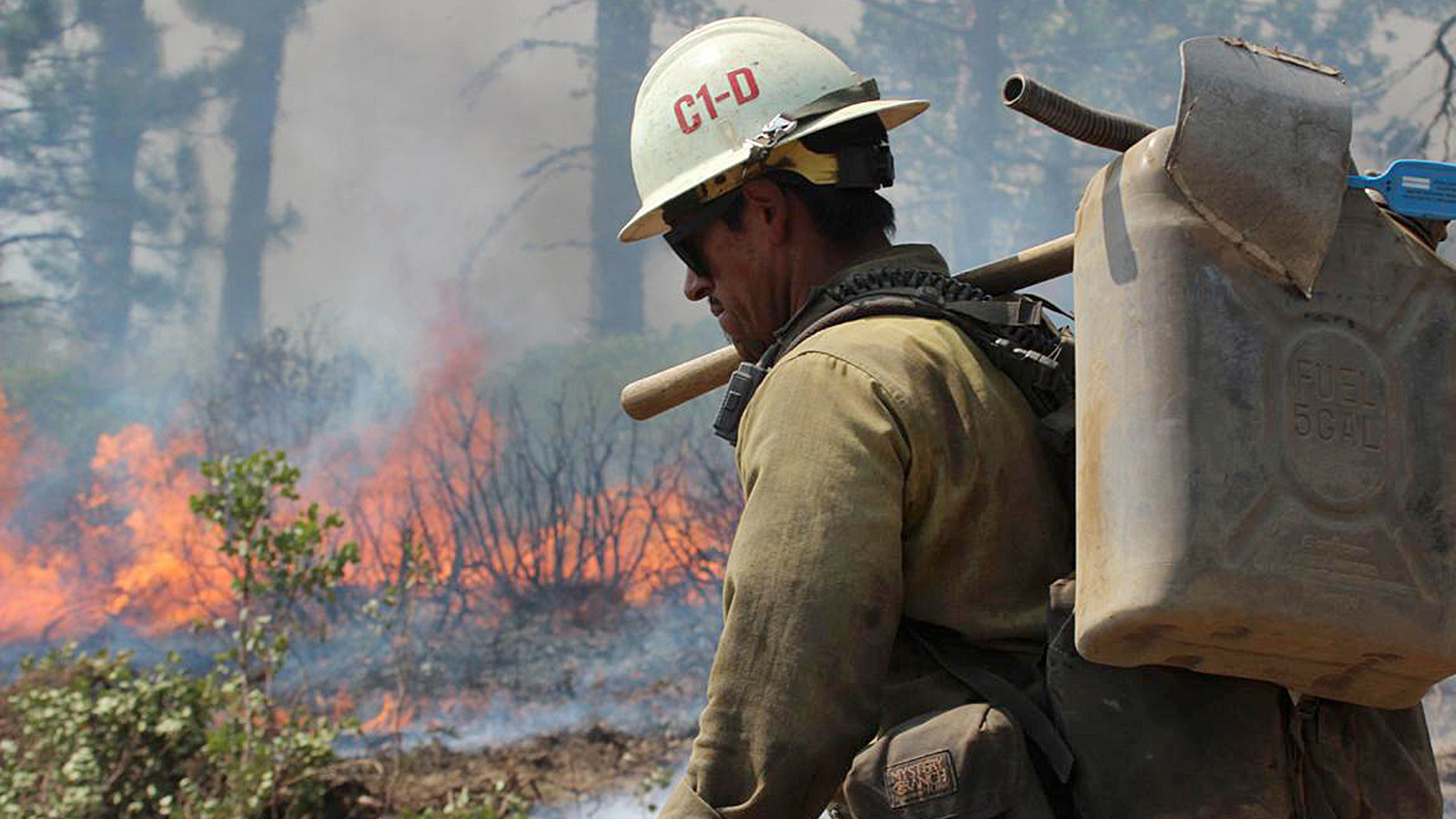
Smokejumper Equipment
Smokejumpers are our first line of defence against forest fires, especially those burning in remote locations or in difficult terrain. Where sending a crew in by truck or on horseback may take a full day, smokejumpers can reach a fire in few hours via airdrop.
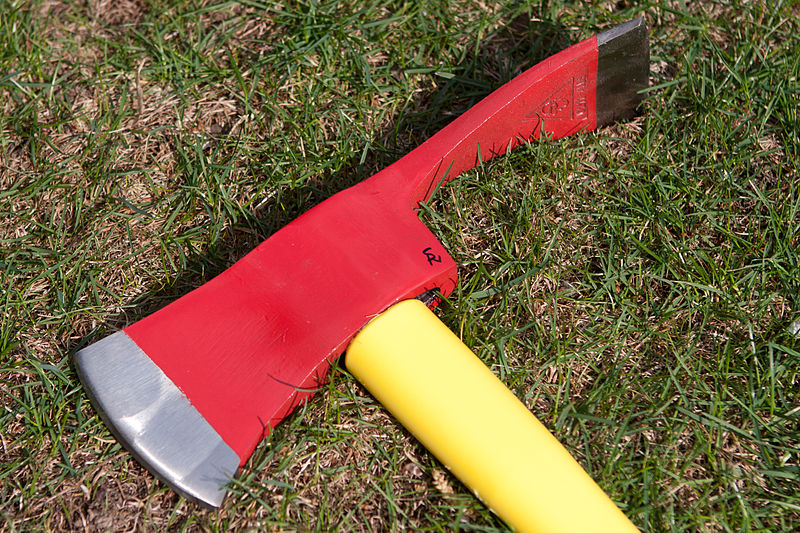
In addition to their basic protective clothing kit — fire-resistant shirts and pants, gloves and boots, eye and head protection, and a fire shelter — smokejumpers also carry a variety of hand and power tools. This can include conventional saws and shovels as well as specialised firefighting tools like the Pulaski above, a combination axe/hoe. The McLeod rake, a two-sided hard rake/cutting hoe developed at the turn of the 20th century, was built to rake the fire line with its teeth and effortlessly slice through branches and soil with the opposite end.
Interestingly, all of the firejumpers’ equipment is dropped out of the plane with them. “It’s delivered as paracargo,” Keith Windell, of the Forest Service’s Missoula Technology and Development Center, told National Geographic.
However, delivering crews and cargo can be dangerous for all involved as the planes have to fly extremely low (as low as 60m) in order to precisely deliver their loads. “So what we’re doing is looking at a couple of different ways to do precision drops from a higher altitude so the plane doesn’t have to drop down so low,” continued Windell. One solution the Forest Service is working on is a timing mechanism to delay the cargo ‘chutes from opening. This would allow planes to drop the equipment from roughly four times as high as current methods allow.
“The other option is to bundle the paracargo together so we can kick out more cargo in one pass,” Windell explained. “That way it reduces the number of cargo runs, so overall there’s less exposure.”
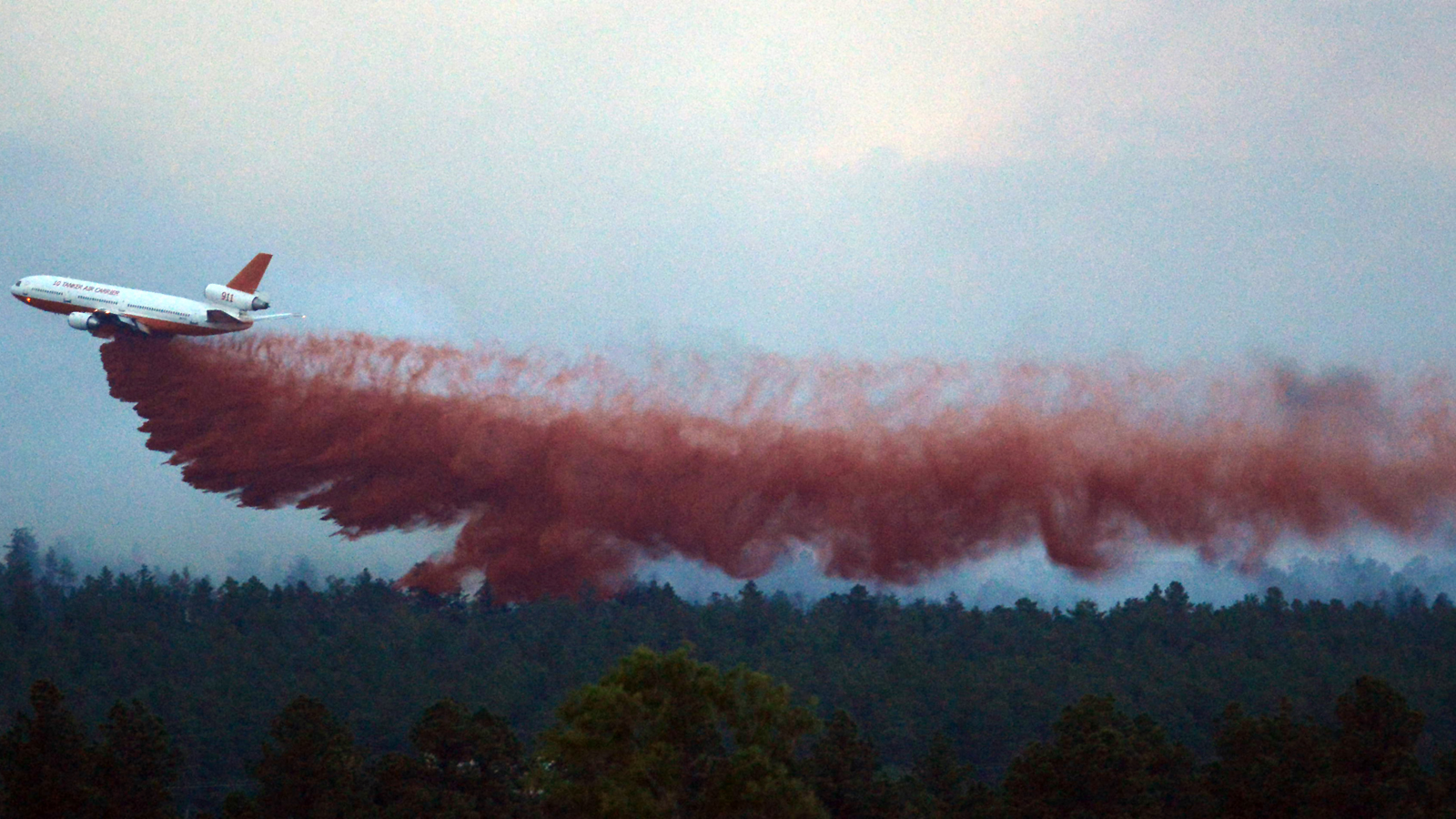
Air Tankers
If the smokejumpers on the scene cannot contain a blaze, they’ll call in air tankers: planes and helicopters designed to attack fire lines from above with fire-retardant gel and water. The largest of these are a pair of modified DC-10 jumbo jets capable of drowning the fire with 45,000kg of gel per pass — quadruple what the Evergreen 747 Super Tanker can accommodate.
“It’s kind of the difference between a Dixie cup and a Big Gulp,” US Forest Service spokesman Mike Martin told The California Report.

Owned by the 10 TANKER company of Southern California, these DC-10s utilises large, computer-controlled underbelly storage tanks that pour the gel out in a controlled flow. This provides a broader, more effective stream of gel while helping the pilots maintain control as the plane suddenly lightens.
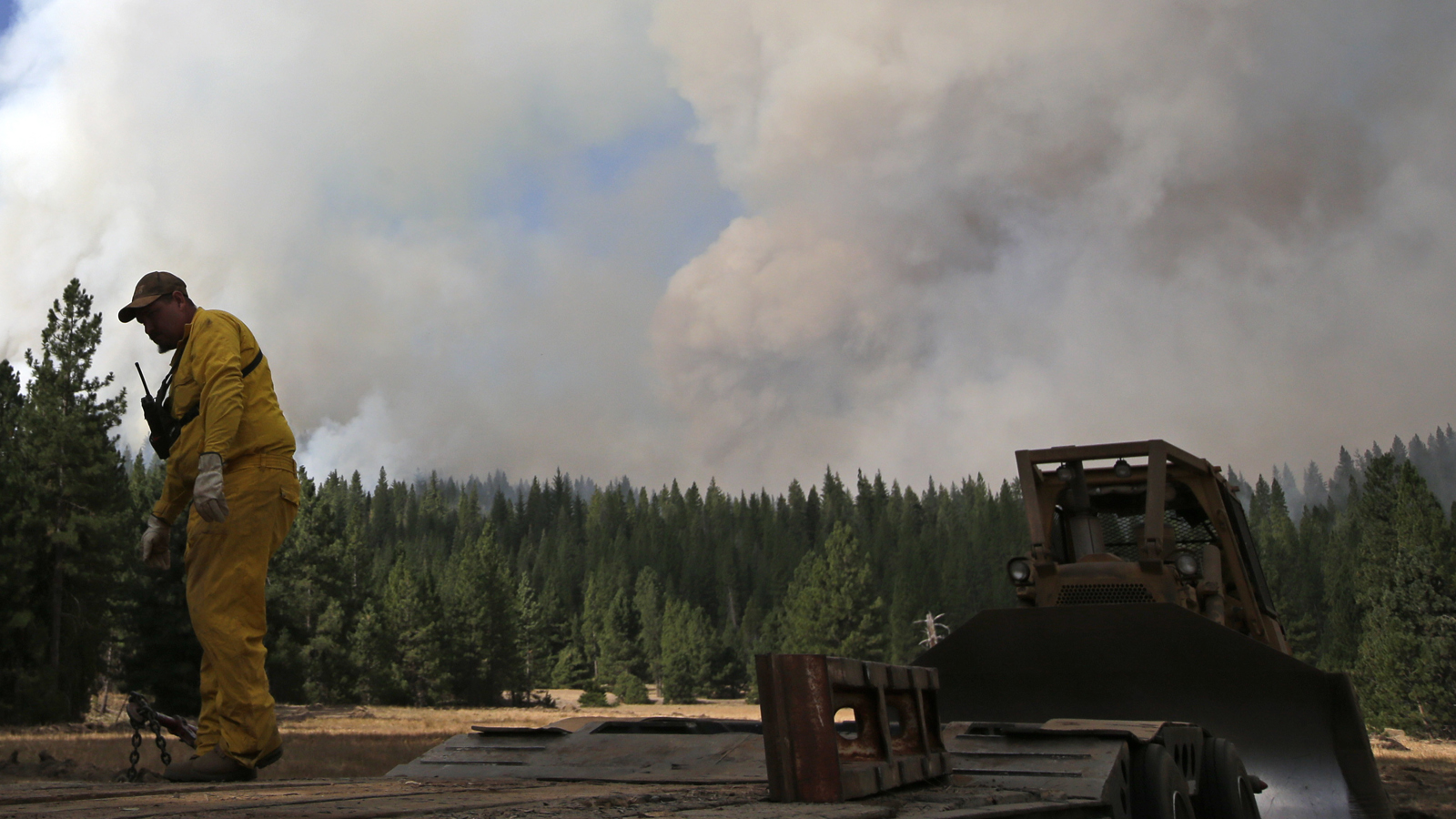
Bulldozers
As planes and helicopters provide heavy equipment support from the air, a fleet of bulldozers are doing the same on the ground. Originally adapted from military bulldozers after World War II, these machines are invaluable in clearing fire lines, moving debris, and forging through thick brush ahead of plows and crews (who then further churn up and clear the line). Though they are hindered by dense tree stands and steep slopes, expensive to run, and difficult to deliver to remote fire sites, they are a vital tool for firefighters.
These dozers come in three class sizes. Type 3 dozers are the smallest class and best suited for light brush work on wet ground. They’re small, manoeuvrable, and do less collateral damage to the environment than their larger counterparts. Type 2 dozers are the most used class, capable of working on moderate slopes in heavy brush without being overly cumbersome. Type 1 dozers are the largest and most difficult to manoeuvre class but also the most powerful. Type 1’s are used primarily to clear heavy brush on level ground as they don’t handle slopes well at all.

Sprinklers
The Rim Fire is also burning within 16km of two of Yosemite’s most treasured Majestic Giant Sequoia groves, Tuolmne and Merced. While sequoias rely on naturally occurring wildfires to reproduce — the fires kill off competing plants, fertilize the soil, and trigger the tree’s seed release — the Rim Fire is burning far more intensely than natural ones. In fact, its the hottest-burning wildfire that the Forestry Service has measured.
To prevent these 1000-year-old trees from going up in flames as well, fire crews have surrounded them with sprinklers and cleared extra-wide boundaries around them. This provides a double layer of protection for the trees. The wide fire line starves the fire of fuel before it can reach the grove while the sprinklers generate humidity and cool the air, negating the flame’s damaging heat.
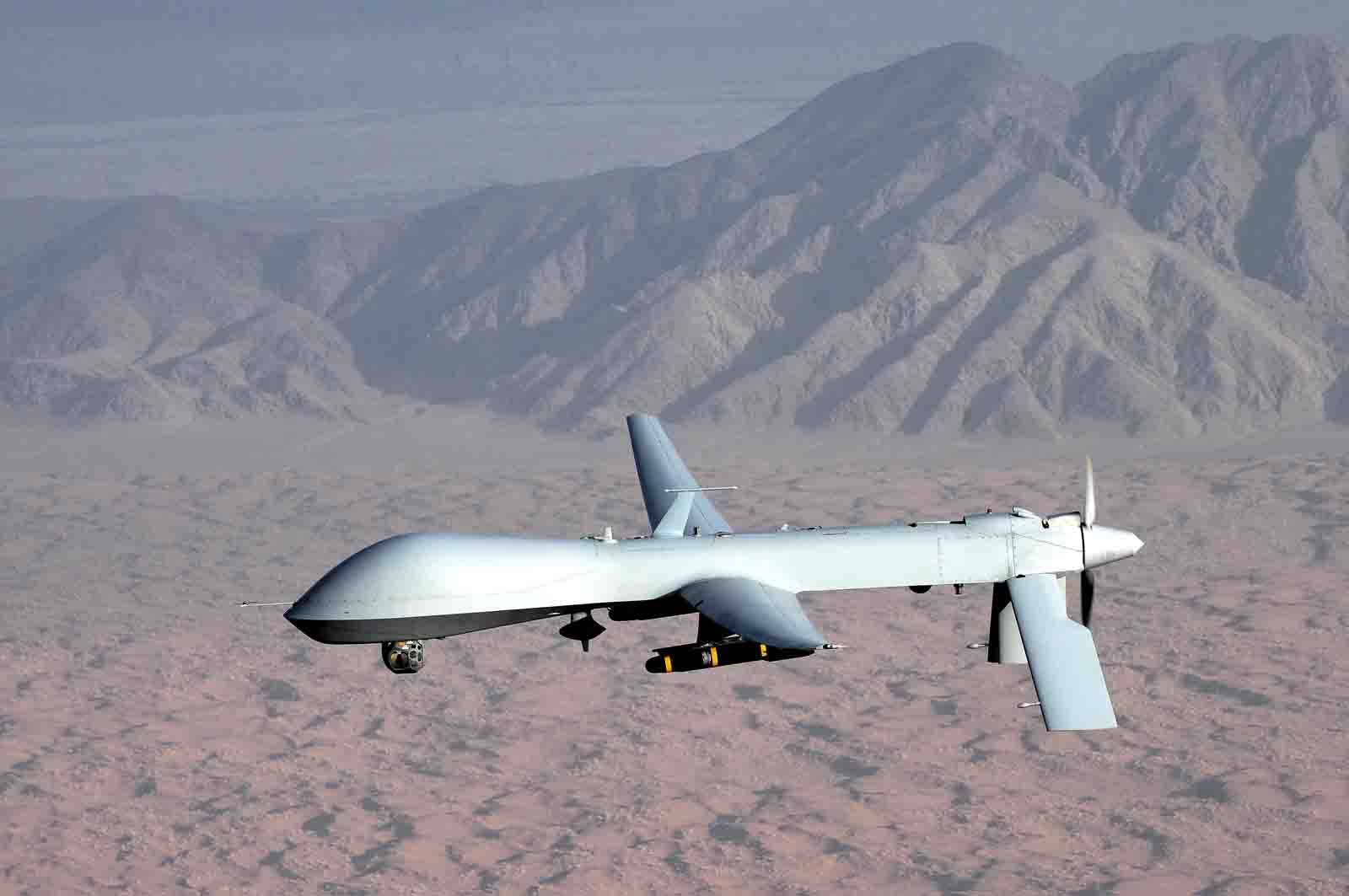
Predators
In addition to the air tankers, the skies above the Rim Fire also host an MQ-1 Predator drone, operated by the 163rd Wing of the California National Guard at March Air Reserve Base in Riverside. This Cessna-sized UAV is helping map the fire as it expands, providing Incident Cmdr. Mike Wilkins with real time information of the fire’s movements.
“The drone is providing data directly back to the incident commander, allowing him to make quick decisions about which resources to deploy and where,” California fire spokesman Daniel Berlant told the New York Daily News. The UAV first launched last Wednesday to providing a perpetual eye in the sky for up to 22 hours at a time.
With continued favourable conditions, crews should have the Rim Fire bottled up within the next few days. However, fire season is far from over and recent drying trends in the West is worrisome. Compared to 40 years ago, the fire season lasts two months longer and burns double the area, according to Thomas Tidwell, the head of the United States Forest Service. And as Matthew Hurteau, assistant professor of ecosystem science and management at Penn State University, told Mother Jones, there could be “as much as a fourfold increase in parts of the Sierra Nevada and California” in the coming years. [Fox 40 – NWCG – NPR – Wildfire Today – Nat Geo 1, 2 – NIFC – KCRA]
Pictures: AP Images, C0nsumer
